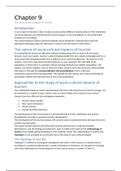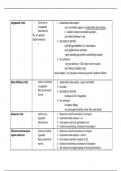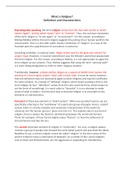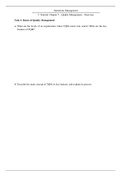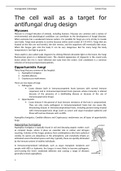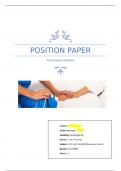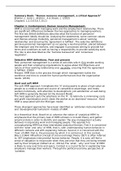Chapter 9
The socio-cultural impact of tourism
Introduction
A core aspect of tourism is that it creates an arena where different cultures interact. That interaction
can be through the act of delivering the tourism product, it can be incidental, or one of the prime
motivators for travelling.
The contact between visitors and local residents can be beneficial or detrimental to the host
population depending upon the difference in cultures and the nature of the contact.
The nature of socio-cultural impacts of tourism
It is impossible for tourism to take place without creating some form of socio-cultural impact
because, by its very nature, tourism is about bringing people from one culture and background to co-
exist temporarily alongside people from a different socio-cultural background. The impacts can be
positive, such as the case where tourism preserves or even resurrects the craft skills of the
population or where there is a positive cultural exchange between two distinct populations. The
impacts can also be negative, such as when the impact detracts from the local socio-cultural beliefs
and values or through the commercialisation and bastardisation of arts, crafts and
ceremonies/rituals of the host population. The impacts can also detract from cultural exchange by
presenting a limited and distorted view of one of the populations.
Approaches to the study of socio-cultural impacts of
tourism
The relationships between tourism development and socio-cultural and socio-economic changes can
be examined in a variety of ways. Authors such as Cohen looked at the study of socio-cultural
impacts from four different but overlapping viewpoints:
1. Tourism impact studies.
2. Host– guest interaction.
3. Tourist systems.
4. Tourists and their behaviour.
The development of the tourist product is inextricably linked to the contribution that tourism
development can make to general economic development.
The development of the tourism product will, to some extent, be determined by the type of tourism
activity that takes place.
The impact brought about by the interaction of hosts and tourists is a well-documented
phenomenon, and the findings of researchers, such as Smith in her book on the anthropology of
tourism, have rapidly gained acceptance in the academic world. The categorisation of tourists into
typologies is now accepted as an orthodox tool in the study of socio-cultural impacts.
The typology of tourists
Typology is a method of sociological investigation that seeks, in this instance, to classify tourists
according to a particular phenomenon, usually motivations or behaviour. An example of a typology
which has implications for the development of the tourism product is shown in Table 9.1.
, Table 9.1 Typology of tourism: frequency of types of tourist and their adaptations to local
norms.
Package tourists – usually demand Western amenities, are associated with rapid growth
rates and often lead to the restructuring of the local economy.
Independent tourists – usually fit in better with the local environment and social structure,
are associated with relatively slow growth rates and often lead to local ownership.
In the twenty-first century there are many ways of categorising tourists, including those interested in
niche products such as wine tourism, real ale tourism, gastronomic tourism, those seeking products
relating to their sexual orientation, such as pink tourism (LBGT), and even those that seek out places
where previous macabre or horrific events took place, such as people interested in dark tourism.
The speed and concentration of tourism development are also important influences on the
magnitude and direction of social impacts and must be taken into account when attempting to
attribute the cause of socio-cultural impacts. The nature of the tourism development process and its
impact on the host population can be categorised into a variety of subsets and the analyses of each
of these subsets can shed additional light on the type and source of impacts attributable to tourism
development.
The tourism development process
Studies that look at the socio-cultural impact of tourism on specific types of destinations according to
their resource base are quite common. Although tourism development can take place in a wide
variety of forms, a typical development scenario considers the tourism product as it grows from
infancy to maturity and looks something like this:
A few tourists ‘discover’ an area or destination.
In response to this discovery, local entrepreneurs provide new or special facilities to
accommodate the growing number of visitors and service their needs. More importantly,
they provide the means to attract more visitors in the future.
The public sector provides new or improved infrastructure to cater for the inflow of visitors.
Finally, institutionalised or mass tourism is developed, which is commonly resort-based and
sold as a package. It is based upon large-volume production techniques in order to exploit
economies of large-scale production in marketing, accommodation and transport, such as
high payload factors for aircraft.
The psychological basis of tourism development
Stanley Plog devised his classification in terms of psychographic analysis, and in this way attempted
to explain why resort destinations appear to follow a pattern that causes them to rise through a
period of development and then fall into a period of decline. He saw a continuum of market
segments with two diametrically opposed groups occupying either pole (see Figure 9.1).
Figure 9.1 Psychographic positions of destinations
Plog’s theory suggests that the tourist segments can be divided into different psychographic traits,
i.e. allocentrics, near allocentrics, midcentrics, near psychocentrics and psychocentrics. The polar
extremes of these groups can be described as exhibiting the following characteristics:
Allocentrics seek cultural and environmental differences from their norm, belong to the
higher income groups, are adventurous and require very little in the way of tourism plant.
The socio-cultural impact of tourism
Introduction
A core aspect of tourism is that it creates an arena where different cultures interact. That interaction
can be through the act of delivering the tourism product, it can be incidental, or one of the prime
motivators for travelling.
The contact between visitors and local residents can be beneficial or detrimental to the host
population depending upon the difference in cultures and the nature of the contact.
The nature of socio-cultural impacts of tourism
It is impossible for tourism to take place without creating some form of socio-cultural impact
because, by its very nature, tourism is about bringing people from one culture and background to co-
exist temporarily alongside people from a different socio-cultural background. The impacts can be
positive, such as the case where tourism preserves or even resurrects the craft skills of the
population or where there is a positive cultural exchange between two distinct populations. The
impacts can also be negative, such as when the impact detracts from the local socio-cultural beliefs
and values or through the commercialisation and bastardisation of arts, crafts and
ceremonies/rituals of the host population. The impacts can also detract from cultural exchange by
presenting a limited and distorted view of one of the populations.
Approaches to the study of socio-cultural impacts of
tourism
The relationships between tourism development and socio-cultural and socio-economic changes can
be examined in a variety of ways. Authors such as Cohen looked at the study of socio-cultural
impacts from four different but overlapping viewpoints:
1. Tourism impact studies.
2. Host– guest interaction.
3. Tourist systems.
4. Tourists and their behaviour.
The development of the tourist product is inextricably linked to the contribution that tourism
development can make to general economic development.
The development of the tourism product will, to some extent, be determined by the type of tourism
activity that takes place.
The impact brought about by the interaction of hosts and tourists is a well-documented
phenomenon, and the findings of researchers, such as Smith in her book on the anthropology of
tourism, have rapidly gained acceptance in the academic world. The categorisation of tourists into
typologies is now accepted as an orthodox tool in the study of socio-cultural impacts.
The typology of tourists
Typology is a method of sociological investigation that seeks, in this instance, to classify tourists
according to a particular phenomenon, usually motivations or behaviour. An example of a typology
which has implications for the development of the tourism product is shown in Table 9.1.
, Table 9.1 Typology of tourism: frequency of types of tourist and their adaptations to local
norms.
Package tourists – usually demand Western amenities, are associated with rapid growth
rates and often lead to the restructuring of the local economy.
Independent tourists – usually fit in better with the local environment and social structure,
are associated with relatively slow growth rates and often lead to local ownership.
In the twenty-first century there are many ways of categorising tourists, including those interested in
niche products such as wine tourism, real ale tourism, gastronomic tourism, those seeking products
relating to their sexual orientation, such as pink tourism (LBGT), and even those that seek out places
where previous macabre or horrific events took place, such as people interested in dark tourism.
The speed and concentration of tourism development are also important influences on the
magnitude and direction of social impacts and must be taken into account when attempting to
attribute the cause of socio-cultural impacts. The nature of the tourism development process and its
impact on the host population can be categorised into a variety of subsets and the analyses of each
of these subsets can shed additional light on the type and source of impacts attributable to tourism
development.
The tourism development process
Studies that look at the socio-cultural impact of tourism on specific types of destinations according to
their resource base are quite common. Although tourism development can take place in a wide
variety of forms, a typical development scenario considers the tourism product as it grows from
infancy to maturity and looks something like this:
A few tourists ‘discover’ an area or destination.
In response to this discovery, local entrepreneurs provide new or special facilities to
accommodate the growing number of visitors and service their needs. More importantly,
they provide the means to attract more visitors in the future.
The public sector provides new or improved infrastructure to cater for the inflow of visitors.
Finally, institutionalised or mass tourism is developed, which is commonly resort-based and
sold as a package. It is based upon large-volume production techniques in order to exploit
economies of large-scale production in marketing, accommodation and transport, such as
high payload factors for aircraft.
The psychological basis of tourism development
Stanley Plog devised his classification in terms of psychographic analysis, and in this way attempted
to explain why resort destinations appear to follow a pattern that causes them to rise through a
period of development and then fall into a period of decline. He saw a continuum of market
segments with two diametrically opposed groups occupying either pole (see Figure 9.1).
Figure 9.1 Psychographic positions of destinations
Plog’s theory suggests that the tourist segments can be divided into different psychographic traits,
i.e. allocentrics, near allocentrics, midcentrics, near psychocentrics and psychocentrics. The polar
extremes of these groups can be described as exhibiting the following characteristics:
Allocentrics seek cultural and environmental differences from their norm, belong to the
higher income groups, are adventurous and require very little in the way of tourism plant.


